This post may contain affiliate links. Please read our disclosure policy.
Instant Pot Elderberry Syrup is a wonderful, earthy and sweet syrup. It is believed to be a great antioxidant, and a possible natural remedy for warding off colds and the flu. This Pressure cooker Elderberry Syrup recipe has extra aromatic ingredients to enhance the flavor. Easy to make from dried or fresh elderberries, and it tastes great!
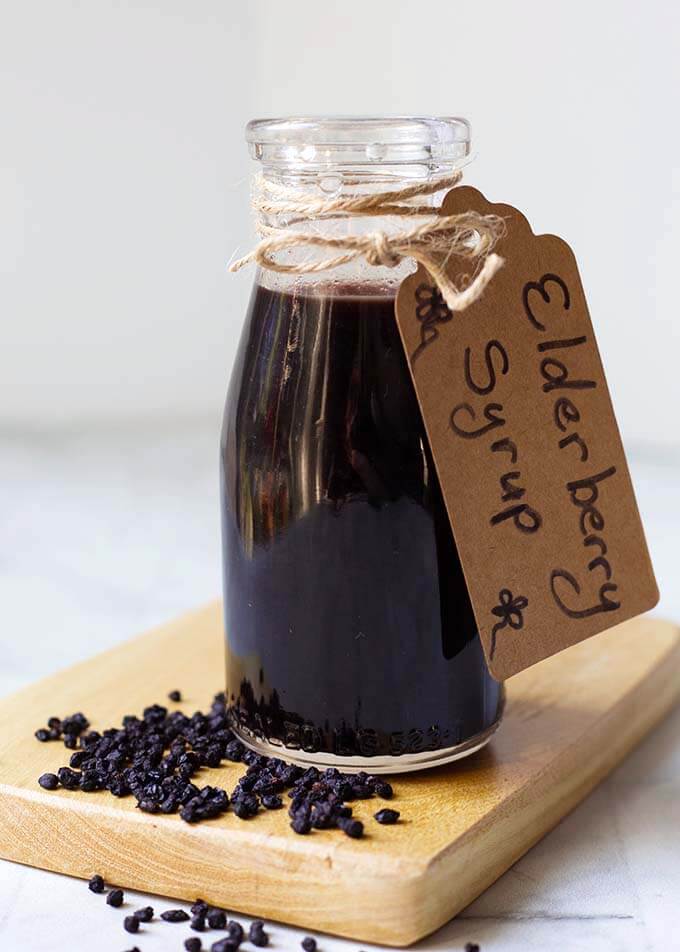
Recipe Updated 1/2019, and 10/2025
Pressure Cooker Elderberry Syrup
With cold and flu season upon us, I like to have something on hand to take daily that I feel will boost my immunity and help fight off sickness. That’s one of the reasons I make Elderberry Syrup.
Truthfully, I have no proof that it works, but I’m pretty healthy, and it tastes great. So I make it and take it!
Which Elderberries To Use For Syrup?
Best Choice: Black Elderberries
Use black elderberries (Sambucus nigra or S. canadensis). They’re the classic choice for syrup and the kind most dried berries are made from.
Dried Elderberries vs. Fresh Elderberries
- Dried elderberries are easy to find, store well, and make consistent syrup year-round. I usually use organic, non-irradiated dried elderberries, but any good-quality dried berries will work.
- Fresh elderberries are lovely in season. Make sure they’re fully ripe (deep purple/black) and free of leaves & stems.
Amount guide: As a rough swap, 1 cup dried elderberries ≈ 2½–3 cups fresh after removing stems.
What To Avoid
- Red elderberries (Sambucus racemosa) — not the same thing; skip these.
- Unripe (green) berries, stems, leaves, and twigs — don’t use them in syrup.
- Berries that smell musty or look dusty/brown.
Buying Tips: Look for berries that are deep purple/black with an even size and minimal stems. Choose reputable herb shops or suppliers that clearly label the species and processing (e.g., “organic,” “non-irradiated,” country of origin, harvest year).
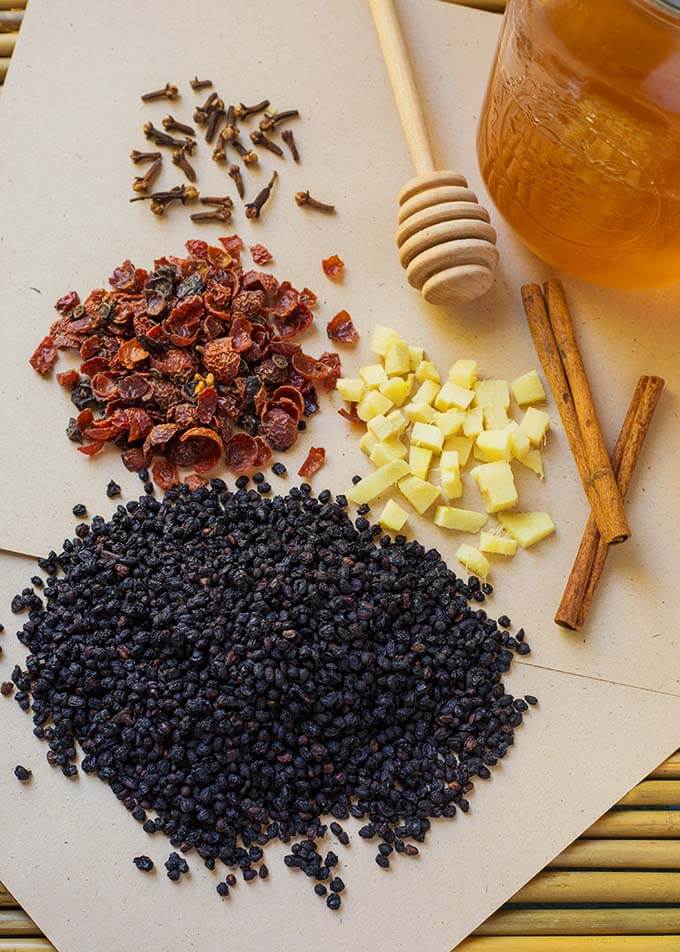
Add-Ins for Elderberry Syrup
Some of the ingredients you can add to your Instant Pot Elderberry Syrup:
- Dried Elderberries (my preference)
- Whole Cloves
- Rose Hips
- Ginger
- Raw Honey
- Cinnamon
- Lemon (which I forgot to put in the photo!)
You can use this Pressure Cooker Elderberry Syrup for many other things
• Splashed in a glass of Soda Water
• In a Cocktail (Elderberry Martini?)
• On Pancakes
• Over Ice Cream
• In Yogurt
• In Oatmeal
• Salad Dressing
• Added to Smoothies
• In Tea
• By the Spoonful
I use it for several of the things I mentioned above. It’s delicious, so why not?!
For maintenance, I take 1-2 Tbsp. a day. If I feel a cold or flu coming on, I take it 3-4 times a day (just my preference, not medical or health advice at all).
Here’s the link to my Elderberry Syrup Gummies recipe: Elderberry Syrup Gummies
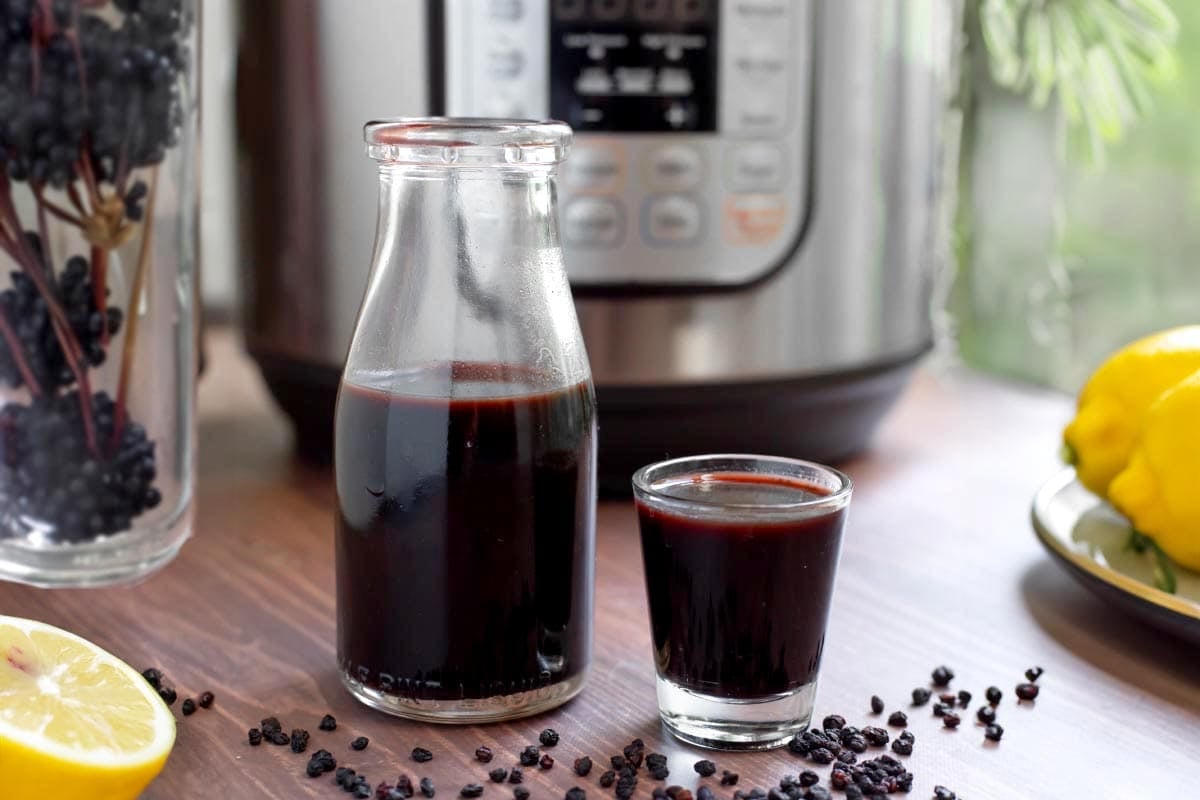
Elderberry Storage
Dried Elderberries
Keep dried elderberries in an airtight jar in a cool, dark cupboard. Use within a year for the best flavor. If the aroma fades, it’s time for a new bag.
Note: Flavor and quality depend more on freshness, variety, and handling than on organic/irradiated status. Safety comes from proper cooking and straining, which this recipe includes.
Fresh Elderberries
Fridge: Keep unwashed clusters in a shallow container, loosely covered; use within 1–3 days.
Wash last: Rinse right before cooking.
Freeze: Strip berries and freeze on a sheet, then bag airtight — or freeze whole clusters and strip while frozen. Use within 6–12 months.
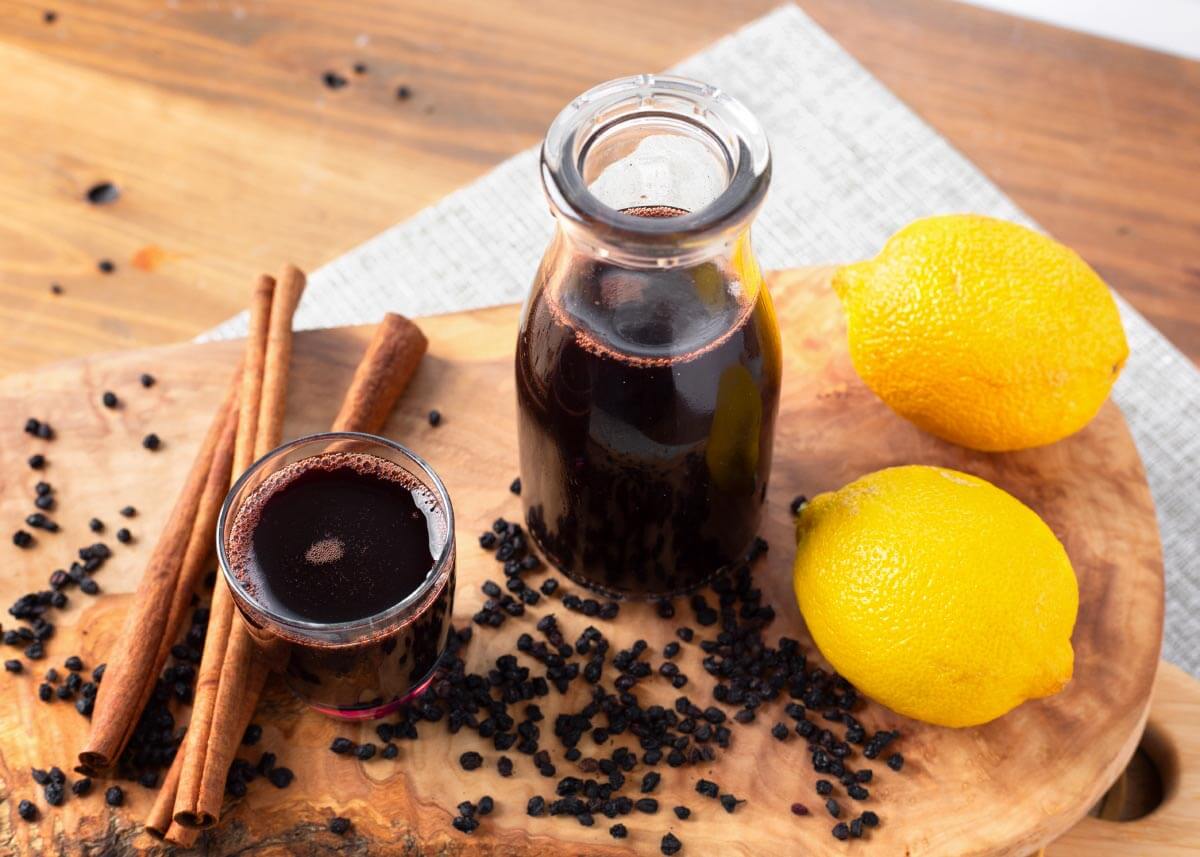
Elderberry Syrup Storage & Shelf Life
Refrigerate
Pour into clean glass jars/bottles, seal, and label the date. Keep refrigerated and use within 2–4 weeks. If you notice mold or any off smell/taste, discard.
Freeze for later
Portion into ice-cube trays or small jars (leave headspace), freeze, then move to freezer bags/containers. Best quality for about 6 months. Thaw in the fridge and use within 1–2 weeks.
- Canning note
There isn’t a tested home-canning process for elderberry syrup, so it’s not shelf-stable. Stick to the fridge or freezer.
- Honey note
Honey-sweetened syrup still needs refrigeration. (And no honey for children under the age of 1 year.)
- Best-quality tips
Use hot, clean containers, minimize headspace, and avoid double-dipping, just pour out what you need.
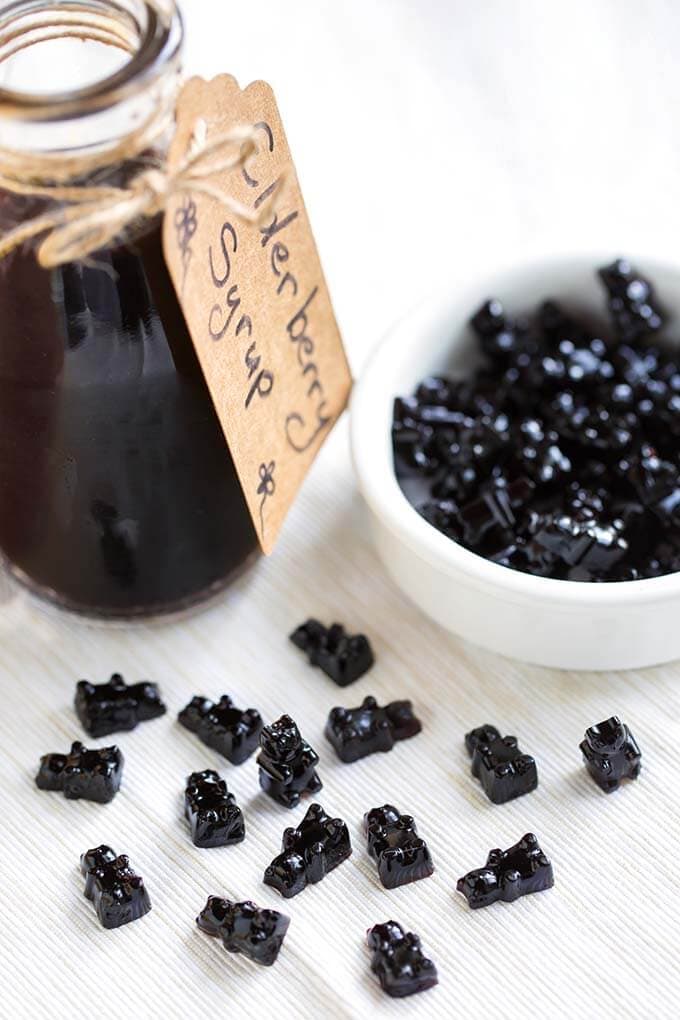
You can also make Elderberry Syrup Gummies!
I have read many articles about the uses of Elderberry Syrup. I have my own opinion about how it works for me and my family.
There is a wealth of information out there on the subject, so doing your own research is a good idea to see if taking Instant Pot Elderberry Syrup is right for you and your family.

Instant Pot Chicken Noodle Soup
Elderberry Syrup Gummies
Peach Simple Syrup
Blueberry Compote

If you make this homemade elderberry syrup recipe, please leave a comment with a star rating below. I would like to know how you liked it.
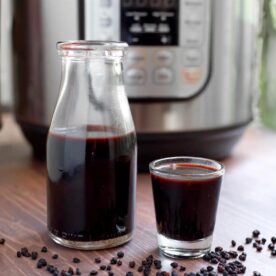
Instant Pot Elderberry Syrup
Equipment
- Electric Pressure Cooker (3 or 6-quart)
- Glass Milk Bottle (for storage)
Ingredients
- 1 cup Organic Dried Elderberries, (or 3-cups Fresh)
- 4 cups Filtered Water
- 2-inch knob Fresh Ginger, chopped
- Peel of 1 Organic Lemon (try not to get any of the white pith)
- 2 Cinnamon Sticks, organic
Optional Ingredients (add with the elderberries)
- 8-12 Whole Cloves
- 2 Tablespoons Rose Hips, dried
Add After Pressure Cooking and Cooling
- ¾ – 1 cup Raw Honey
- Juice of 1 Lemon, organic
Instructions
Prep
- Measure out the ingredients, peel, then juice the lemon, chop the ginger, etc. Remove and discard any bits of elderberry stems or leaves.
- Add all ingredients except the honey and lemon juice to the inner liner of the pressure cooker.
Pressure Cook
- Place lid on and set the steam release knob to the Sealing position.
- Press the Pressure Cook (or Manual) button or dial and then the +/- button or dial and select 15 minutes. When the cook cycle finishes, turn off the pot so it doesn't go to the Warming setting. Let it fully Naturally Release the pressure.
- Open the lid and carefully take out the inner pot and strain out the berries and any solid bits (I have a large heat-safe pyres-type of bowl for this). Return the liquid to the inner pot, and return the inner pot to the pressure cooker.
Simmer and Reduce
- Turn on the Sauté setting to the LOW temperature. Let the syrup simmer uncovered for a minimum of 10-15 minutes, stirring occasionally, to finish cooking out possible remaining cyanogenic glycosides. It will reduce and thicken a bit.
Cool and Finish
- Add the liquid to a heat-safe glass bowl to cool. When cooled to about room temp, add the honey and whisk until fully incorporated (if you add the honey to hot syrup, it will kill off the good properties of the raw honey).
- Add the juice of 1 lemon and whisk. Taste and add more honey if you like it sweeter, or more lemon if you like it tart.
Prepare to Store
- Transfer the elderberry syrup to a sanitized bottle or mason jar with a lid and refrigerate for up to 2 months.
- Elderberry Syrup Suggested "Dosage":For intensive use:Adults: 2 teaspoons 4 times dailyChildren: 1 teaspoon 4 times dailyFor daily maintenance:Adults: 2 teaspoons dailyChildren: 1 teaspoon dailyExcerpt from: The American Botanical Council THE ABC CLINICAL GUIDE TO ELDER BERRY European Elder Berry Sambucus nigra L. Family: Caprifoliaceae
Stovetop Instructions
- Add elderberries, water, ginger, lemon peel, cinnamon, (and cloves and rose hips, if using), to a medium saucepan and bring to a low boil. Reduce heat to a low simmer for 45 minutes to 1 hour.
- Mash the berries while still in the pan, then strain through a fine mesh strainer or cheesecloth.
- Let the mixture cool, then whisk in the honey until dissolved.
- Add the lemon juice, if using, and stir.
Notes
Nutrition
Nutrition information is automatically calculated, so should only be used as an approximation.
Instant Pot Elderberry Syrup FAQs
Current food-science and extension sources indicate the safety issue comes from uncooked or improperly processed plant parts (especially leaves/stems and unripe fruit), not from pressure cookers themselves. Proper heat processing reduces cyanogenic glycosides. My method uses ripe elderberries only, excludes stems/leaves, cooks thoroughly, and includes an uncovered simmer after pressure cooking.
Sources: CDC elderberry illness report (1983) – https://www.cdc.gov/mmwr/preview/mmwrhtml/00000311.htm ; Appenteng 2021 – https://pubmed.ncbi.nlm.nih.gov/33806603/ (full text: https://pmc.ncbi.nlm.nih.gov/articles/PMC7961730/) ; Senica 2016 – https://trishaselderberries.com/wp-content/uploads/2022/08/EE_Processed-elderberry.pdf ; Oregon State Extension – https://extension.oregonstate.edu/catalog/em-9446-play-it-safe-when-preserving-elderberries ; Penn State Extension – https://extension.psu.edu/elderberry-in-the-garden-and-the-kitchen
Hydrogen cyanide (HCN) is highly volatile (boiling point about 25.6 °C / 78 °F). Allowing the syrup to simmer uncovered after pressure cooking helps volatiles dissipate, similar to a stovetop simmer.
Source: NIOSH/CDC HCN properties – https://www.cdc.gov/niosh/ershdb/emergencyresponsecard_29750038.html
Yes. Use ripe black elderberries only and discard all stems/leaves. Multiple extension publications emphasize removing these parts and cooking before consuming.
Sources: Oregon State Extension (guide & PDF) – https://extension.oregonstate.edu/catalog/em-9446-play-it-safe-when-preserving-elderberries and https://extension.oregonstate.edu/sites/extd8/files/catalog/auto/EM9446.pdf ; Penn State Extension overview – https://extension.psu.edu/elderberry-in-the-garden-and-the-kitchen
Legal Disclaimer
The products and claims made about specific products or foods on or through this Site have not been evaluated by the United States Food and Drug Administration and are not approved to diagnose, treat, cure or prevent disease. This Site is not intended to provide diagnosis, treatment or medical advice. Products, services, information and other content provided on this Site, including information that may be provided on this Site directly or by linking to third-party websites are provided for informational purposes only. Please consult with a physician or other healthcare professional regarding any medical or health related diagnosis or treatment options. This post/article is not intended to diagnose, treat, cure or prevent any disease.
Statements regarding dietary supplements have not been evaluated by the FDA and are not intended to diagnose, treat, cure, or prevent any disease or health condition.


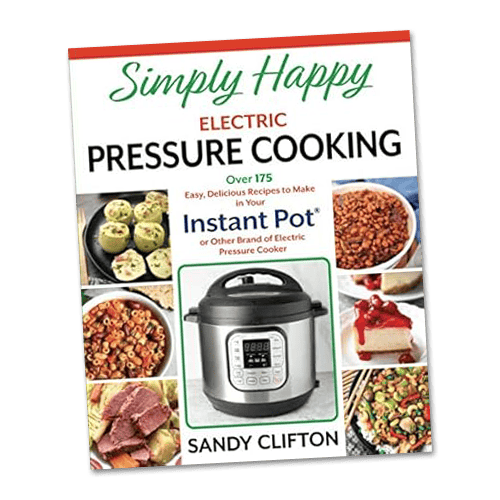
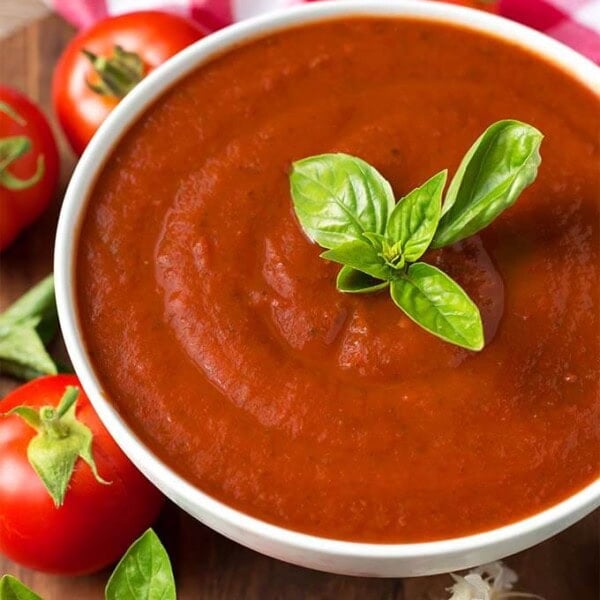
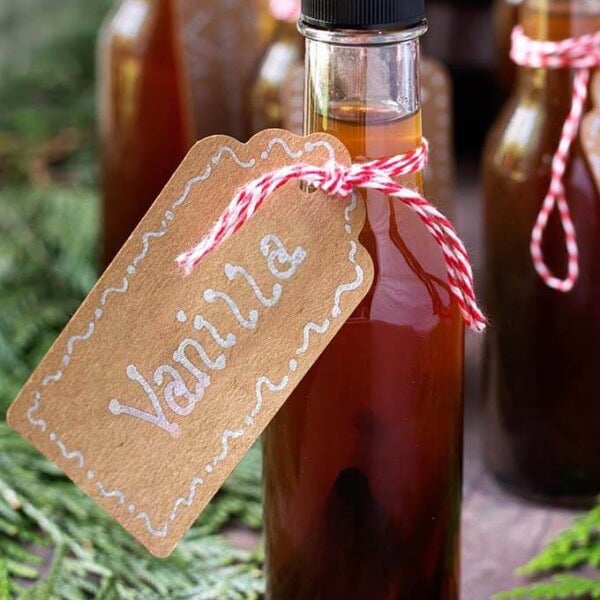
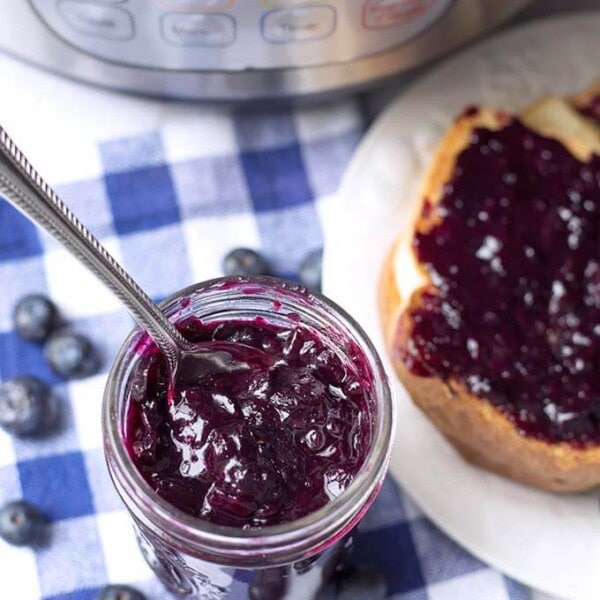
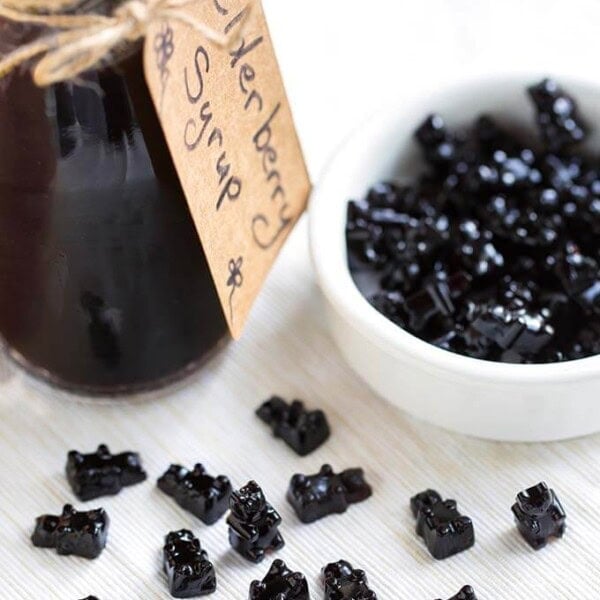









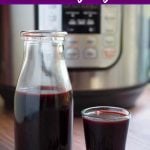
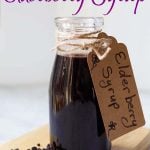
Hi, I’ve been making elderberry syrup on the stovetop for years but saw your recipe and thought the Instant Pot would be so much easier. However, before I got a chance to make it in the IP, I found an article that says this is actually dangerous. As we know, there is cyanide in elderberries which is why they can’t be eaten raw. I mistakenly thought that the heat of the cooking process somehow destroyed the cyanide. But, it turns out, the cyanide gets released in the steam! If elderberries are cooked in an Instant Pot, the cyanide cannot escape and is captured in the elderberry syrup we are making. Evidently, elderberries need to be cooked at high heat for at least 20 minutes to allow all the cyanide to escape. I thought you’d want to know this as the results of cyanide in the body do not always show up at once. Here’s a link to the article I read [link removed by moderator]
Thanks so much for raising this topic, as safety matters to me, too. I looked into the “cyanide gets trapped in Instant Pot elderberry syrup” claim and here’s what I found from primary sources:
Elder plants contain cyanogenic glycosides (mostly in leaves/stems and unripe fruit). There’s a documented 1983 outbreak from a batch of elderberry juice made with leaves/twigs, not from using a pressure cooker. (CDC MMWR report: https://www.cdc.gov/mmwr/preview/mmwrhtml/00000311.htm
)
CDC
Heating reduces these compounds in processed elderberry foods; one food-science study measured up to ~96% reduction after thermal processing of elderberry products. (Senica et al., 2016: https://trishaselderberries.com/wp-content/uploads/2022/08/EE_Processed-elderberry.pdf
)
Trisha’s Elderberries
An analytical study on American elderberry found no quantifiable cyanogenic glycosides in commercial elderberry juice, and very low amounts in pressed-juice tests. (Appenteng et al., 2021: PubMed https://pubmed.ncbi.nlm.nih.gov/33806603/
; PMC full text https://pmc.ncbi.nlm.nih.gov/articles/PMC7961730/
)
PubMed
+1
University extensions advise using ripe berries only, removing stems/leaves, and cooking before consuming; they do not warn that pressure cooking increases cyanide risk versus stovetop. (Oregon State Extension: web page https://extension.oregonstate.edu/catalog/em-9446-play-it-safe-when-preserving-elderberries
and PDF https://extension.oregonstate.edu/sites/extd8/files/catalog/auto/EM9446.pdf
; Penn State Extension overview: https://extension.psu.edu/elderberry-in-the-garden-and-the-kitchen
)
OSU Extension Service
+2
OSU Extension Service
+2
For context, hydrogen cyanide (HCN) is very volatile (boils at 25.6 °C / 78 °F), so heating + venting tends to drive it off. (NIOSH/CDC: https://www.cdc.gov/niosh/ershdb/emergencyresponsecard_29750038.html
)
CDC
I couldn’t find peer-reviewed data showing that an Instant Pot traps cyanide and leaves more in the syrup than a stovetop simmer. That specific claim seems to originate from blog posts rather than measured comparisons. (Example of the claim: https://thefewellhomestead.com/why-you-shouldnt-make-instant-pot-elderberry-syrup/
)
thefewellhomestead.com
Even so, I’m cautious: my recipe uses ripe berries only (no leaves/stems), pressure cooks them, then strains and simmers the liquid uncovered so volatiles can dissipate, aligning with the general guidance that heat processing reduces cyanogenic glycosides. If someone prefers, the recipe also works entirely on the stovetop.
Appreciate you checking in and sharing your source!
I just made a batch and it turned out great! Now, I’m trying to make a triple batch. Do you know how long I should set my Instapot for?
Just add 5 minutes.
Hi Sandy, I used someone else’s IP recipe which used 1C dehydrated elderberries and 3 1/2 cups filtered water. I do not have a manual setting, just low and high. Her instructions said to cook on manual for 20 minutes. I used low pressure. All of the liquid cooked out and scorched the bottom on the pot liner. I want to try your recipe and hope not to waste more of the elderberries. Can you please provide any info regarding the settings? I’m thinking low for 7 minutes should work (?).
If you follow my recipe you shouldn’t have any issues. I make this all the time. You don’t need manual setting, just use the Pressure Cook button. You can cook on low pressure if you prefer. Just follow the recipe!
Have you ever used fresh picked elderberry. Just starting to get a real harvest off of our bushes. So not using dried and I think we need to double the elderberries used? Not sure ?
I haven’t, though I want to. My bush hasn’t produced yet. I would maybe cut the liquid a bit. Be sure not to include any stems.
Thank you so much for sharing this recipe. I’ve used it twice so far and I’m on round 3! I started drinking it when my
Kids all starting coming down with Influenza A and we’re laid out with 103 degree temps. I never got sick!! Bless! Do you know if I can use ground cinnamon in place of stick if I’ve run out? Thanks!
Yes, I have used organic ground cinnamon. You will want to shake it well before taking.
With this ratio of water to elderberries (I used 3 cups fresh per 4 cups water, per my friend’s suggestion) in the Instant Pot, and not cooking it down to a thick syrup (mine is more like juice), would the dosage be the same? It seems if you leave it as-is you might need a larger dose. Is that accurate?
If it were me I would take a larger dose. Maybe half again as much (for myself). Again, I’m not a medical expert or anything like that, so do some research first!
I’m making this for the first time after a friend shared it with me. Is it possible to reuse the elderberries, cinnamon sticks, and cloves for another batch? It seems like there is still a lot of good stuff left in them.
I think so. It may not be as strong, but you could use a little less water.
I love this recipe. I’ve made it three times already. I put half in a jar and freeze the other half until I finish the jar. I wasn’t a fan of the clove so I no longer add those. I have not had a flu since I started this. This is my immune system go to. So glad I found this simple, delicious recipe. Elderberry syrup at the store can be really expensive, but this recipe is quite economical and well worth every cent. I can’t say enough about it.